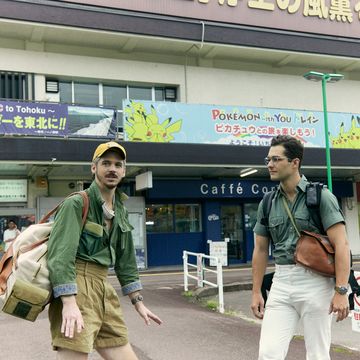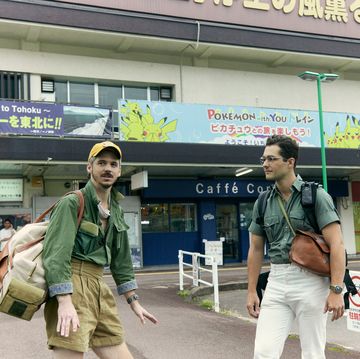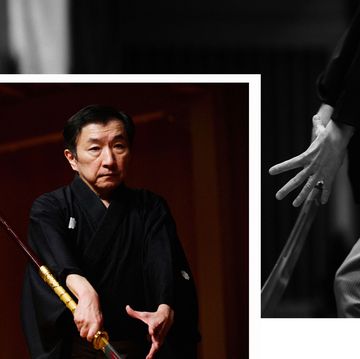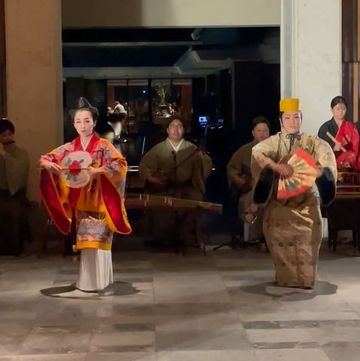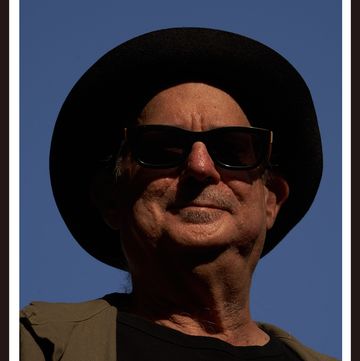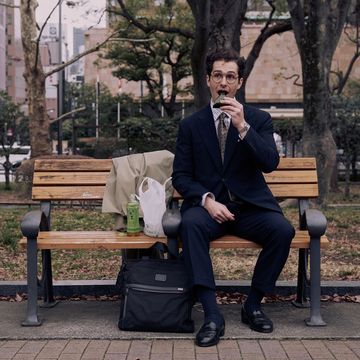2022 marked a special year for Okinawa Prefecture: 50 years ago on June 17, 1971, the islands were returned to Japanese sovereignty. While the reversion marked an important moment in Japan’s postwar development, it added another layer of complexity to Okinawa’s centuries-long struggle with identity. History aside, this struggle for “self” is not hard to imagine for a prefecture that sits closer on a map to Taipei than to Tokyo. Indeed, ask most citizens on the mainland and they’ll readily acknowledge Okinawa as a “forgotten” prefecture, or even a “country within a country”—that is, if they have anything to say about the place at all. Yet, driven primarily by what is “instagram-worthy”, Okinawa remains a boon to Japan’s younger generation who flock to the islands each summer, in search of sun, fun, and jealousy-inducing subtropical content.
On October 22, 2022, His Majesty the emperor Naruhito and Empress Masako made their first visit to Okinawa since their ascension to the throne.
This momentous occasion was inevitably colored by comparisons to his father Akihito’s infamous visit to the “Himeyuri Tower”in 1975, when members of an extremist group greeted the couple with a hurled molotov cocktail. The structure memorializes the “Himeyuri Students Corps.”, a group mostly comprised of female elementary schoolteachers and students, conscripted as field nurses during the later stages of the Pacific War. On June 18, 1945, these women, who were stationed on the frontline battlefield, were suddenly ordered to disband in the middle of defeat. Over the ensuing days, most of the 200 conscripts perished as war casualties, even after the official Deactivation Order was given. 91 of those students and teachers were lost in the Battle of Okinawa, alone. War conscripts aside, the Battle of Okinawa was unprecedented in land warfare, claiming 200,000 Japanese lives, and among those roughly one quarter of the native Okinawan population at that time.
The Battle of Okinawa is commonly referred to as the “Typhoon of Steel” (鉄の暴風) and lasted from the end of March to the end of June 1945. It was the only place in Japan where ground fighting took place. Japanese defenses were heavily concentrated on the islands to protect the mainland. Many locals who considered themselves more Okinawan than Japanese were conscripted in this effort. By the end of the war, Okinawa was almost completely featureless. The sheer human tragedy incurred during that time is of such magnitude, that assessing it with objectivity is a near-impossible task—a fact that has only further complicated Okinawa’s relations, right up to the present day.
For the ensuing 27 years after the surrender, Okinawa did not receive adequate support from mainland Japan under the administration of the U.S. Military, and was largely excluded from the postwar economic miracle that positively transformed the livelihoods of most Japanese citizens. By the time reversion occurred in 1972, Okinawa desperately lagged behind the rest of Japan in it’s recovery: the islands still lacked roads, ports, schools, hospitals, housing and other basic infrastructure. This late start only served to further compound Okinawa’s alienation, the results of which can be seen today in plain view.
2022 was a special year, and I’m grateful to have had the opportunity to visit Okinawa during this unique time of reflection. For about as far back as records exist, Okinawa was its own kingdom, serving as a vital port of call for international trade. The Okinawan People’s reputation for warm hospitality and talent for mediation, was known the world-over. On my trip from Tokyo, I wondered how much of that spirit lived on today. My goal was to experience the islands just as they come. Taking it all in as I would on the islands I grew up on—just another faceless New Yorker in the crowd.
I visited Okinawa for the first time in my life, on the occasion of its 50th anniversary of reversionto Japan. Okinawa’s many cultural transformations and historical accidents don’t fit neatly on a page. For hundreds of years, the indigenous Ryuukyu people were renowned for their willingness to support trade in the region, and for their exceptionally warm hospitality, not to mention for their unique religious and artistic traditions. I found these characteristics to be present today, in different forms and depending on which part of the territory one visits. In limited time, I tried to reconcile in my mind the way that Okinawa is seen, with the way residents see it for themselves.
At the recommendation of a friend, I started with Nago castle, an enclosed fortification from the 14th century which belonged to a district ruler of the Ryuukyu Kingdom. During the 20-minute climb to the top under the high noon sun, I could imagine the sheer toil of the Chuzan soldiers who later captured the structure in the 15th century. Now more mausoleum than military installation, I sat from the ancient stronghold perched above the concrete kingdom of Nago City. Hundreds of years ago this view would have been reserved for a very select few, and now, just for me, it seemed. In the hours I spent there, I could only find one other man, praying to the shrine at the top of the castle embankment.
I descended the fortification, looking forward to my next meeting with anticipation. But how was Okinawa actually living in the present? One has to descend to find out.
Thanks to the generosity of another friend, I had the opportunity to speak with a retired U.S. Marine who fell in love with the people and culture when he was first stationed there in the 90’s. He stayed to raise a family and is now a proud father, participating heavily in the local community through sports and school, especially surfing (and cat appreciation).
A consummate quiet professional from first encounter, even in a Hawaiian shirt, flip-flops, and by his own admission “really bad” tattoos (accumulated from a lifetime of service around the globe).
Growing up in America, surrounded by up-and-coming bands, he tried his hand at music and developed a lifelong appreciation for the guitar. Work and family are first on his list, but in his down time you’ll find him catching waves and catching up with local community members young and old, alike.
I posed a few questions about his life there which I will share below without added comment:
What brought you to Japan, and why have you stayed so long?
I joined the Marine Corps because I was searching for something intangible, but I did not know what it was. After high school, I spent about five years trying to make something happen as a musician, but I was going nowhere with that dream. My first duty station after boot camp was Okinawa. From the moment I stepped foot on this island, I have always felt like I was home. I would be stationed here many times throughout my twenty-year military career. I did not plan on staying here, but as my children were born and they began to grow up here, this became our home.
What is your experience of Okinawa vs the rest of Japan?
I have not spent much time in mainland Japan. On Okinawa, most of my time was spent in the northern part of the island. After I retired from the military, my family and I moved to a small village north of Nago. The jungle was behind our house, and the ocean was a few hundred meters away. My wife’s extended family is from a northern village called Ogimi, which is the area in Japan with the most hundred-year-old people in the world. Many documentaries and news stories have been done about that village. My kids got to grow up in and around that village. I have documented a lot about that village and my wife’s extended family there.
To what degree do you find history colors your experience of Okinawa?
Marines exist on this island because it was the last major battle of World War II. I have spent nearly 20 years discovering Okinawa from a different perspective, and I have focused on the concept of love, mercy, and grace. The people of Ogimi embody this attitude in their daily lives and in their complete commitment to each other. I am convinced that love and belonging, along with diet and exercise, make them live such long lives. George Kerr’s book “Okinawa: The History of an Island People” excellently explains the nuances of Okinawa.
We stopped en route to the beach to greet our feline friend, who proudly extended his length across a warm parking space.
What’s your relationship with the local culture like?
I will always be a foreigner and a guest on this island, but I know this place well. I have traveled extensively, but I have never seen more beautiful sunsets than those I witnessed at Ogimi Village. The ocean is different here, especially on some of the outlying islands. The waters of Okinawa have a particular blue-green hue to them that is both calming and beautiful to see.
Okinawa and the Marine Corps have also heavily influenced my creative work. My most recent video work is a 26-minute documentary about a group of recon Marines who climbed a mountain with their wounded. It was picked up by a few film festivals last year. My video portfolio is here.
Additional video work is below.
I have been a working musician for most of my life, and I have gradually combined my audio and video efforts during the last ten years. My audio portfolio is here.
After shooting by one of the island’s many quiet beaches, we finished the day talking about life and enjoyed some Cohiba Siglos and some coffee as we walked down the boardwalk of American Village.
The cool blue sunset washed over everything; panacea to American Village’s neon lights.
We finished our Siglos and hastily put them out in a coffee cup. As we came to the end of the boardwalk we saw a group of high school kids perched on concrete pylons, transfixed by the roiling waves and the cold waning sunset.
“Look at that bunch, school must be out,” I said. Apparently, the local kids had been told so many times not to jump the wall, that the adults had finally thrown up their hands and relinquished. There was no pushing back the tide of curiosity and youth.
“Well, I think I see my kid in there, I better go and find him.” And with that we parted ways.
Sometimes as much as you choose your home, it chooses you in return.
*Click here for Japanese Pages(日本語版)







